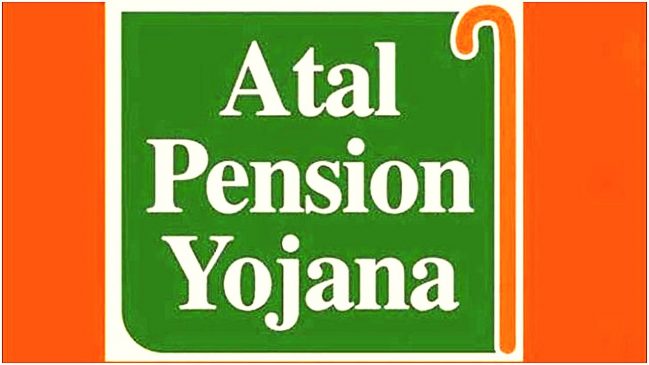The newly announced Unified Pension Scheme (UPS) for central government employees is hogging the headlines. About 23 lakh central government employees are anticipated to be eligible for the new plan. If state governments choose to implement it, that figure could reach 1 crore.
Those numbers, though, are put in the shade by another, earlier scheme. Did you know that a government-guaranteed pension scheme designed for the less well-off could benefit almost 6 crore people? The Atal Pension Yojana (APY), launched in 2015 by the Union government, is aimed at providing financial security to people in the unorganised sector post-retirement. It enables them to invest a small sum every month and get a fixed monthly income after they retire.
According to the Pension Fund Regulatory and Development Authority (PFRDA), the total number of subscribers enrolled under APY as of March 2024 was 5.6 crore. In comparison, the ‘all citizens model’ of the National Pension System (NPS) has 35 lakh subscribers overall.
APY scores over other retirement-related investment products on many fronts. For one, it is a pension guaranteed by the government. For another, it does not pinch the subscriber’s pocket, given the modest contribution amount. It also offers a superior annuity model and the icing on the cake is the tax benefits it entails.
What is so special?
Any Indian citizen aged between 18 and 40 years but not an income-tax payer can enrol in the scheme. (Those already paying income tax were made ineligible from October 2022.)
The subscriber pays a nominal premium on a regular basis (monthly, quarterly or half-yearly) during the accumulation period till s/he attains the age of 60. After the age of 60, s/he will get a pension of Rs 1,000, Rs 2,000, Rs 3,000, Rs 4,000 or Rs 5,000 per month, depending on the contributions made.
The monthly contribution to APY is modest—from a low of Rs 42 a month for an 18-year-old desiring a monthly pension of Rs 1,000 to a maximum of Rs 1,454 a month for a 40-year-old seeking Rs 5,000 as monthly payouts.
Triple benefits
As pointed out earlier, APY gives a pension that is guaranteed by the government. But there’s more.
First, it gives a lifetime monthly fixed pension in the range of Rs 1,000-5,000 after attaining 60 years of age depending on the person’s choice and corresponding contribution.
Second, the person’s spouse gets the same amount of pension for life on the subscriber’s demise.
Third, the contributed amount with interest is returned to the nominee on the demise of both the subscriber and spouse.
On the flip side, unlike in the case of the NPS, you cannot withdraw a portion of your corpus after you retire. Your entire accumulated corpus gets compulsorily converted into annuities.
For example, under APY, an individual will receive a monthly pension of Rs 5,000 after turning 60 if s/he joins at the age of 18 and contributes Rs 210 per month for 42 years. After the subscriber’s death, the spouse will continue to get the same pension. Later, the nominee of the subscriber will be given the entire corpus, a lump sum of Rs 8.5 lakh in this instance.
An appealing annuity rate
These benefits were specially designed for the poor and the underprivileged, the profile that is the most prevalent in the unorganised sector. These include maids, delivery boys, gardeners and daily wage labourers. APY works better than other annuity alternatives available.
For instance, for a corpus of Rs 8.5 lakh, the monthly pension provided by most life insurers under this annuity option (family income with return of purchase price) currently is around Rs 4,500, while APY assures Rs 5,000.
A conservative hybrid investment approach
Under APY, the subscriber can not choose either the investment pattern or pension fund the money is deployed with. The premium collected from the subscriber is divided equally among three retirement fund managers—LIC Pension Fund, SBI Pension Fund and UTI Pension Fund.
Each manages a single conservative hybrid portfolio that invests up to 15 percent in equities while the rest goes into debt and money market instruments. In the equity portion, the stocks are chosen from the universe of the top 200 stocks shortlisted based on the average full market capitalisation over the preceding six months, as directed by the regulator.
The three managers collectively managed around Rs 39,000 crore as the total APY corpus as of July 2024.
In the event that market conditions cause the return from these funds to fall short of the required return, the government will make up the difference and guarantee subscribers’ defined pension.
However, in the nine years since launch, these APY funds managers have generated a compound annual growth rate (CAGR) of 9.1 percent, 9.3 percent and 9.4 percent, respectively, according to data from NPS Trust.
Read More: Post Office Mahila Samman Saving Scheme, Know Benefits and Interest Rates
Attractive tax benefits
As per the government’s directive, income-tax payers were not allowed to open an APY account from October 2022. However, the tax benefit is available for those subscribers who joined before the above indicated date.
As per the FAQs put out by the PFRDA, the customer should not be an income-tax payer on the date of making an application for registration under APY. If on a later date he or she becomes an income-tax payer, there shall not be any effect on their APY account. All such APY subscribers can continue their APY account and contributions to it for availing of benefits provided under the scheme.
Contributions to APY are eligible for the same tax benefits that the NPS enjoys. Apart from the Rs 1.5-lakh deduction under Section 80CCD(1) of the Income-tax Act, the premium paid into APY can get an additional deduction of up to Rs 50,000 under Section 80CCD(1B). However, the pension receivable is taxed as per the income tax slab of the subscriber.
How to apply?
Online and offline modes are available. You can open the APY account by visiting nationalised and major private banks and post offices. Auto debit facility is provided. You can also open an APY account through eNPS portal by clicking this link: https://enps.nsdl.com/eNPS/ApySubRegistration.html
Investors can track the balance and transaction details through the mobile app “APY and NPS Lite”.
APY ensures regular cash flows in the post-retirement years. The higher assured pension of Rs 5,000 seems reasonably attractive, considering that during downturns in the interest rate cycle, guaranteed-return products can offer much lower returns. It is a good idea that both husband and wife enrol in APY and get a pension of up to Rs 10,000.
The costs involved in maintaining the APY account are similar to that of the NPS and include registration, record-keeping, account opening and maintaining charges, and investment management fee.





































